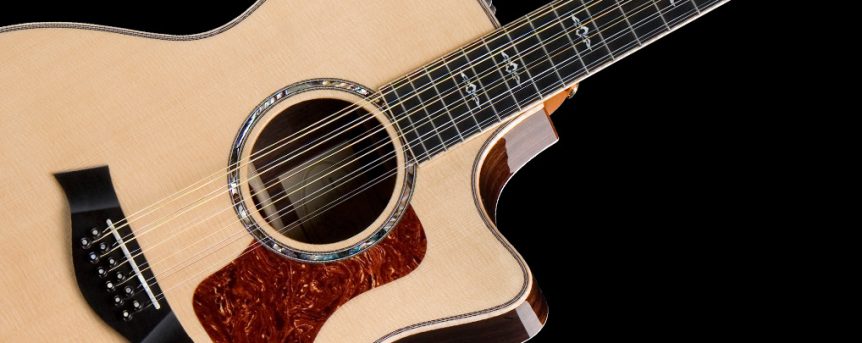How the tuning of the 12 string can confuse picking patterns
There are two very popular songs with intros played on a 12 string acoustic guitar that have a few notes that sound different from what you hear on the recording: More Than a Feeling by Boston, and Wanted Dead or Alive by Bon Jovi. Below are the tabs for the intros for those two songs.
More Than A Feeling E E E E E E E E E E E E E E E E ||--------3-(3)-2-----|------------------|| ||o---3------3----3---|-----3-----3---3-o|| ||------2-----------0-|---0-----0--------|| ||--0-----------------|------------------|| ||o-------------------|-3-----2---------o|| ||--------------------|-------------3----|| Wanted Dead or Alive
S S S S S S S S S S S S S S S S S S S S S S S S S S E +E. S |------13---------12---------10--------8---|-----5-------3-------1-(1)---| |------------------------------------------|-----------------------------| |---14----14---12----12---10----10---9---9-|---5---5---4---4-4s2---------| |-0----------0----------0----------0-------|-0-------0-----------------0-| |------------------------------------------|-----------------------------| |------------------------------------------|-----------------------------|
These tabs are correct (from the looks of them, they’re probably conversions of the Finale files used for Guitar For The Practicing Musician transcriptions), but if you play what’s written here on a 6 string acoustic guitar, the notes on the third string won’t sound entirely correct. That’s because of the tuning of the 12 string guitar.
How Twelve String Guitars are Tuned
Twelve string guitars consist of 6 pairs of strings tuned as follows:
6th string pair – E normal and E up one octave
5th string pair – A and A up one octave
4th string pair – D and D up one octave
3rd string pair – G and G up one octave
2nd string pair – the same B note for both strings (i.e. a unison interval)
1st string pair – the same E note for both strings
That G string is the culprit. For some reason, in those two songs, when notes are played on the third string the higher octave string seems to ring out more. In the case of More Than a Feeling, it’s not on every third string note, but on the last note of the first measure and the ones in the second measure. It sounds a little more like the song when you play it as follows:
More Than A Feeling E E E E E E E E E E E E E E E E ||--------3-(3)-2---3-|---3-----3--------|| ||o---3------3----3---|-----3-----3---3-o|| ||------2-------------|------------------|| ||--0-----------------|------------------|| ||o-------------------|-3-----2---------o|| ||--------------------|-------------3----||
The same goes for Wanted Dead or Alive. If you play the riff as follows on a six string acoustic, it sounds a little more like it does when played on a twelve string.
|---17----17---15----15---13----13---12----12|--8----8---7---7-7s5------| |------18---------17---------15---------13---|----10-------8-------6----| |--------------------------------------------|--------------------------| |-0----------0----------0----------0---------|-0-------0----------------| |--------------------------------------------|--------------------------| |--------------------------------------------|--------------------------|
You might be wondering why it’s like this with these songs? I can’t say for sure, but my guess is that those notes that are played on the third string were played with downstrokes; since the higher octave string is placed above the lower octave string, if you play that pair of strings with an downstroke, the higher octave string will ring out a little more than the lower octave string. And for some reason, this is more noticeable with the third string than the fourth, fifth, and sixth strings.
Whether you should play it differently is up to you. When I’ve performed Wanted Dead or Alive with bands, I did it playing the notes on the higher frets. I think More Than A Feeling could sound good either way, but again, I’d probably do it playing the higher notes.
